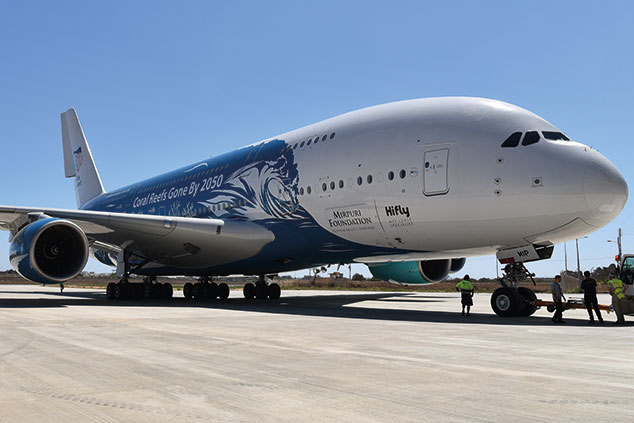
Aircraft-leasing funds were hit by fears over their planes’ resale value. Now, the funds look cheap.
There was one small piece of good news for the Airbus A380 on display at the Farnborough Air Show last week. While Airbus netted no new orders for its struggling superjumbo, Hi Fly – a Portuguese charter airline – showed off the latest addition to its fleet: an A380 previously used by Singapore Airlines. If you’re invested in any of the Doric Nimrod funds, that’s an important development.
These three closed-end funds own a fleet of A380s leased to Emirates, the flag carrier for Dubai. Doric Nimrod Air One (LSE: DNA) owns a single A380, with a lease that expires in 2022; Doric Nimrod Air Two (LSE: DNA2) owns seven A380s, with leases expiring 2023-2024; and Doric Nimrod Air Three (LSE: DNA3) has four A380s, expiring 2025. These aircraft are leased at a fixed rate for a fixed term, with the airline having all responsibility for costs, including insurance. At the end of the term, the plan is to sell the planes, wind up the fund and return the proceeds to investors (although they might get the option to vote on leasing the planes out again).
Lease payments are set partly in US dollars (which pays the interest and principal on the debt used to part-fund the aircraft purchase), with the rest in sterling to pay dividends. So the amount of income the funds will pay is already known. At current prices, this gives a running yield of around 8.7% for DNA, 8.6% for DNA2 and 8.2% for DNA3, paid quarterly. The income risk, of course, is that Emirates defaults on the lease, which is unlikely, but can never be ruled out.
Waiting for a market
The real uncertainty lies in the resale value of the aircraft at the end of the lease. The funds provide an estimate of the value of their assets, updated each March, and the latest reported fleet values per share are 178p, 344p and 167p respectively. Given share prices of 103p, 210p and 101p, that looks a healthy discount. However, those estimates are highly uncertain because there is no used market for A380s yet and hence there is no benchmark for valuations.
Dr Peters, a German asset manager that owns the first two A380s to return from lease (also both with Singapore Airlines), struggled to re-lease the planes and has now announced that it plans to dismantle them to sell for parts. Events like this, combined with the fact that Emirates failed to place an order for more A380s at the Dubai Air Show in November, have stoked fears about the plane’s future and led to weakness in the funds’ share price over the past year.
However, the Hi Fly deal – which involves it leasing a plane owned by another Doric vehicle – suggests customers for used A380s exist. What’s more, Emirates ultimately confirmed in January that it would buy another 20 new A380s, and British Airways has been interested in buying more A380s or leasing used ones to replace its oldest 747s when they are phased out in 2021. So there is a decent chance that the A380 will still be in demand when the ones owned by the Doric Nimrod funds come off their leases.
Uncertain but interesting
If the planes were quickly sold for their current estimated value at the end of the lease, I estimate an annualised total return of about 17% on DNA, 14% on DNA2 and 13% on DNA3 – but that’s far too optimistic. If they sold for the parts value that Dr Peters is estimating, it would be 3%-4%, which is hopefully quite pessimistic.
The comparison between the funds is not easy: the plane owned by DNA is an early one that may have a lower resale value than later ones owned by DNA2 and DNA3. Still, I think DNA looks especially interesting at this price. I have bought a small amount while waiting to see what happens to the next two planes that have come off lease with Singapore Airlines, one of which should also be going to Hi Fly.